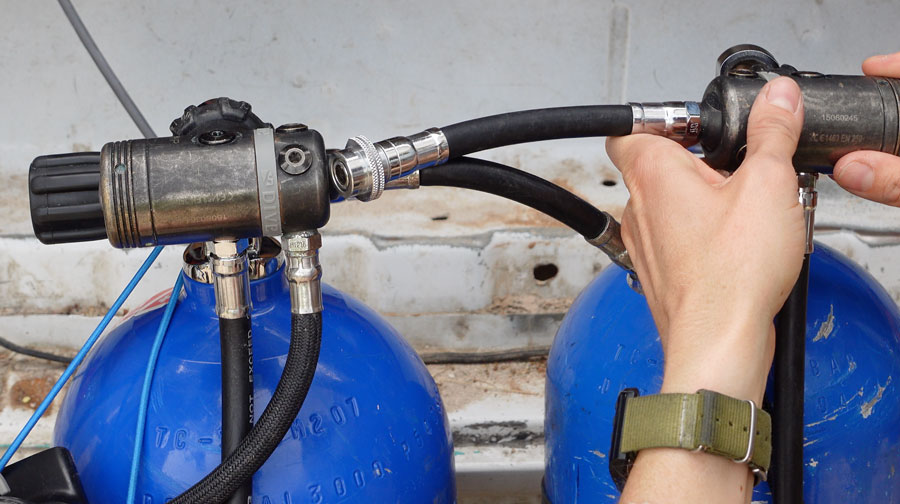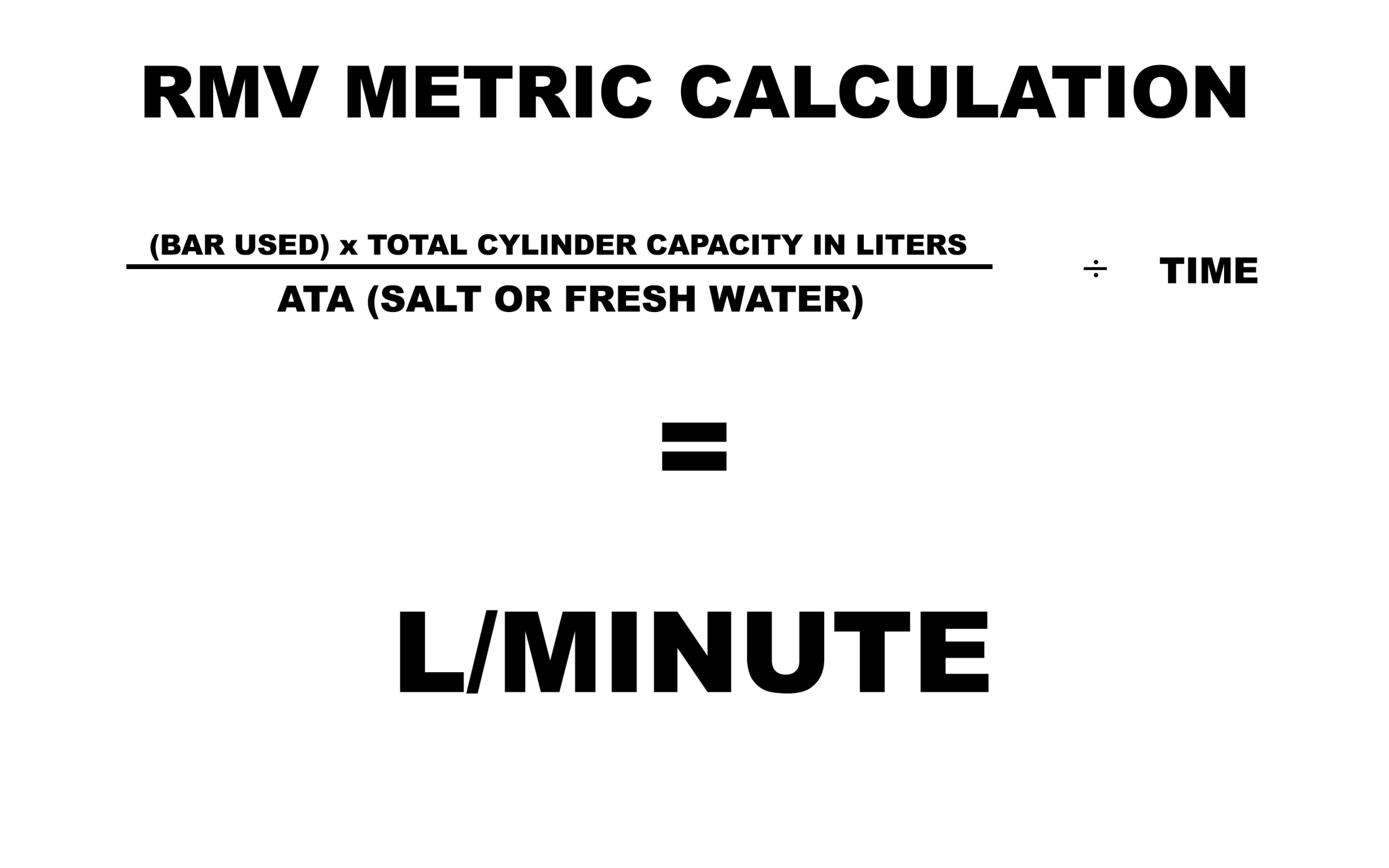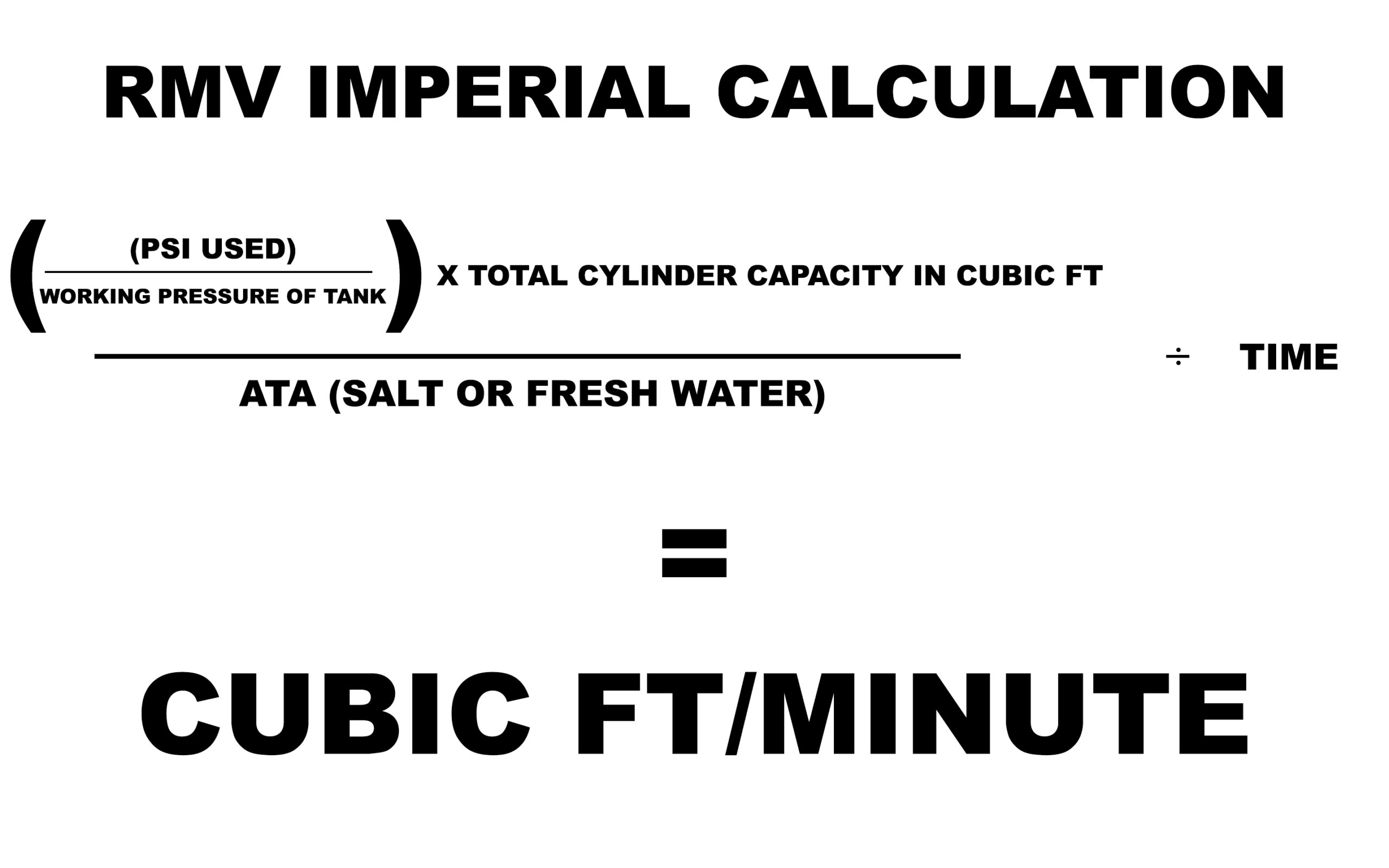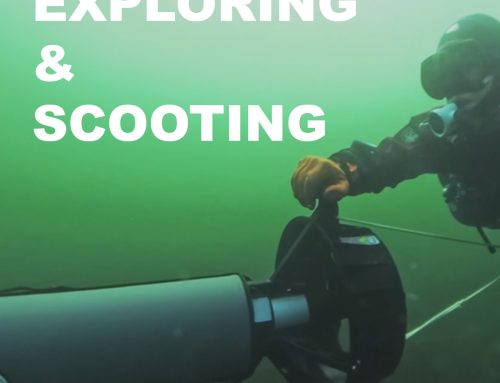Let’s talk about SAC (Surface Air Consumption) and RMV (Respiratory Minute Volume), what’s the difference, and how to calculate them.
The confusion around surface air consumption
You’ll hear recreational divers talk about SAC, and they are usually calculating it in bar or psi/minute. Let’s talk about why this could be OK for some divers in certain circumstances, but it is not a completely accurate unit of measurement and cannot be used by technical divers to calculate their gas needs.
When calculating SAC as bar or psi/minute, you’re not considering the volume and pressure of the tank. That means you cannot compare that SAC rate across all cylinder sizes, meaning you can’t compare that number with buddies who dive with different tanks.

SAC in pressure/minute
For recreational purposes, using your own tanks (or always renting the same tanks), you can calculate your SAC in this way and use it to track changes in your air consumption based on skill development, fitness, water conditions, task loading, etc. I like to think of this as a sort of rough and ready air consumption calculation in units that are easier for our brains to conceptualize.
The equation for this is simple:
((Starting pressure – Ending pressure)/Absolute ATA)/Duration of the test = SAC
For example: you use 40 bar while swimming at 15 m for 10 minute. 40/2.5/10= 1.6 bar/minute SAC
This is not useful for technical divers because we need to take the correct amount of liters (or cubic feet) of each gas to cover the dive plan, which will include smaller cylinders of higher percentage O2 for decompression stops.
Now we come to another part of the confusion for these terms
In technical diving, many divers use SAC and RMV interchangeably, but only when SAC is calculated as a volume/minute measurement. Used in this way, your SAC should be calculated in liters or cubic feet per minute.
Respiratory Minute Volume is the volume of gas that moves through your lungs during one minute.
In the medical community, RMV is calculated differently (and more accurately) for different respiratory treatments.
For simplicity’s sake, we’re going to stick with the term RMV for this volume per minute calculation, but just know that you’ll hear both terms being used in the wild with scuba divers.
Remember, air consumption will change depending on your depth, which means that the deeper you go, the higher your RMV will be, and the more gas you’ll consume.
How to do gas consumption runs
For any gas consumption rate calculations you’ll need to do in-water gas consumption runs to get numbers. No matter what units you’re using, you’ll need your SPG, a depth gauge, and watch. Wear your desired dive gear (same configuration, accessories, weight, etc) and go to a place where you can maintain the same depth for at least 10 minutes (more is better). Take note of the depth and time.
Do a few different tests, and it’s best to do these multiple times in order to get an average, which will be more accurate. Do one test resting as if you’re doing a decompression stop. Another one swimming at a normal pace, and a final one exerting yourself to simulate swimming against a current. Take your SPG pressure at the beginning and end of each timed session.
RMV Calculations
Metric

Example: You use 50 bar with a single tank with a 12 liter capacity, swimming at 15 meters for 15 minutes in fresh water.
((50×12)/2.46)/15=16.2 liters per minute RMV
Imperial

Example: You use 450 psi with twin 71 cubic feet tanks (142 total capacity, working pressure 2475 psi) while swimming at 40 feet for 15 minutes.
RMV = ((450/2475)x142)/2.21/15 = .78 cubic feet per minute
In the tec world, divers use RMV in different ways
Open circuit technical divers use this calculation to determine gas needs to complete the dive.
Closed circuit rebreather divers on the other hand, use this calculation to predict scrubber canister lifespan, meaning the more gas that goes through the scrubber, the quicker the scrubber will need to be changed.
Strategies to improve air consumption
- Dive more, improve your skills in your configuration
- Have your gear streamlined and be properly weighted
- Minimize your movements (lazy diving)
Can we get away from the comparison game anyway???
Having the lowest SAC rate doesn’t mean you are the best diver. Sure, your air consumption goes down with increased skill and comfort in the water, but different physiology means different gas needs, that’s it.
Future Azul Unlimited dive expeditions
If you want to join me on my next trip, sign up for Patreon (and get trip discounts) or my email list for first dibs on boat spots.








